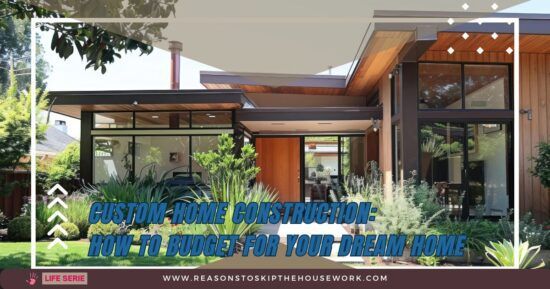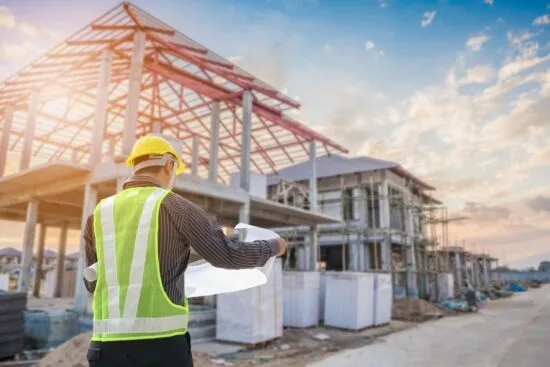
Building a custom home is exciting. However, without a solid budget, costs can spiral fast. Every decision affects your bottom line. It’s true whether you’re out buying land or finally choosing finishes. Do you want your dream home without the money stress? Here’s how to plan your budget the smart way and avoid money stress along the way.
Contents
Set a Realistic Budget from the Start
Before you build your dream home, you need to know how much you can really spend. Start by looking at your current income, monthly expenses, and savings. This will help you figure out what you can comfortably afford without stretching your finances too thin.
Next, talk to a lender or financial expert who can guide you through your financing options. Getting pre-approved helps you understand what’s actually within reach. It gives you a clear idea of how much money you’ll have to work with. It also helps you avoid looking at features or layouts that are out of your price range.If you’ve worked with renovation contractors in the past, like Crown Constructions, you’ll know how helpful it is to have pros who can provide honest cost estimates and realistic expectations upfront.
Make sure to think about long-term costs too. You’ll have property taxes, utilities, maintenance, and possibly homeowners’ association (HOA) fees. Don’t forget to factor in insurance for your new build, which can be different from typical home insurance.
Just be honest about your budget from the beginning. That’s how you can avoid stress later on. A well-planned budget helps keep your project on track and makes sure you’re building a home you can truly afford to enjoy.
Understand the Key Costs of Custom Home Construction
Building a custom home comes with many costs. Some expected, others not so obvious. Breaking them down early helps you budget with fewer surprises.
- Land purchase and preparation: This is your starting point. Prices vary based on location, size, and nearby services. Once you own the land, you’ll need to clear it, grade it, and possibly connect to utilities like water, electricity, or septic systems.
- Design and architecture fees: This comes next. Whether you work with an architect or a design-build firm, expect to pay for plans, customizations, and consultations. The more changes you make, the higher the price.
- Construction costs: This cover labor, materials, permits, and inspections. Materials like lumber, concrete, and roofing fluctuate in price, so it’s a good idea to get detailed quotes from your builder and lock in pricing where you can.
- Finishing touches and upgrades: Lastly, flooring, kitchen cabinets, paint, and lighting can take up a big chunk of your budget. Always leave room for these details. These final details bring your space to life and reflect your style.
Understanding these categories helps you avoid surprises and make smarter choices throughout the build.
Smart Ways to Cut Costs Without Cutting Quality

Saving money during custom home construction doesn’t mean settling for less. It just means making smart choices from the start.
- Choose the right builder: Not all builders are the same. Get quotes from several and check their past work. A good builder will be upfront about costs and help you stay within budget without sacrificing quality.
- Pick standard sizes and materials: Custom windows, doors, and cabinets look great. However, they come with a higher price. Choosing standard sizes and common materials can lower costs while still giving you a clean, modern look. You can always upgrade later when your budget allows.
- Build in phases: Focus on what you truly need first, like your kitchen, main living area, and bathrooms. Leave extra features like a finished basement or outdoor kitchen for later. This way, you’re not overloaded with costs all at once.
Being smart with spending helps you get the home you want without draining your wallet. A few smart moves can help you save without sacrificing the parts that matter most.
Planning for the Unexpected
Even with the best plans, building a custom home can come with surprises. That’s why it’s important to leave some room in your budget for things you didn’t expect.
- Include a contingency fund: A good rule of thumb is to set aside 10% to 20% of your total budget for unexpected costs. This could cover price changes in materials from suppliers, weather delays, or issues with the land like poor soil or hidden debris. That extra cushion keeps you from scrambling if prices jump or something unexpected comes up.
- Watch for hidden fees: These can sneak up on you and blow your budget. Think about permit costs, utility hookup charges, soil tests, and inspections. Some areas also have impact fees, which are charges for things like new roads or schools that may be tied to your build.
A solid buffer helps your project move forward without added stress and lets you make decisions based on what’s best, not just what you can still afford.
Keeping Your Budget on Track
Custom home construction can cost at least USD$100,000. Once your build begins, staying on top of your budget is just as important as setting it. If you’re not watching closely, your spending can get away from you fast.
- Track spending during the build: Use a spreadsheet or budgeting app to monitor where your money is going. Break it down by category, such as materials, labor, design, permits. Also, don’t forget to update it regularly. Meet with your builder often to review progress and confirm that everything is staying within budget.
- Avoid scope creep: It’s easy to get tempted by upgrades along the way, like adding a bigger deck or switching to more expensive flooring. But small changes add up. Before approving anything new, ask yourself if it’s really needed right now. Maybe it can wait until later?
- Stick to the original plan: Major changes to the layout or materials mid-project can delay the timeline and increase costs. Try to make all your big decisions early and avoid backtracking.
Keep a close eye on spending and stick to your plan to avoid stress and finish your build with fewer financial surprises.
Conclusion
Budgeting for your custom home is about making smart choices that protect your vision and your wallet. With the right plan, you can build with confidence, not worry. Use these tips to stay on track and build the home that fits your life, and your budget.
